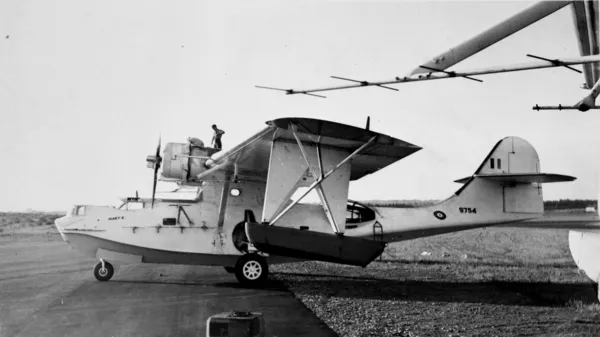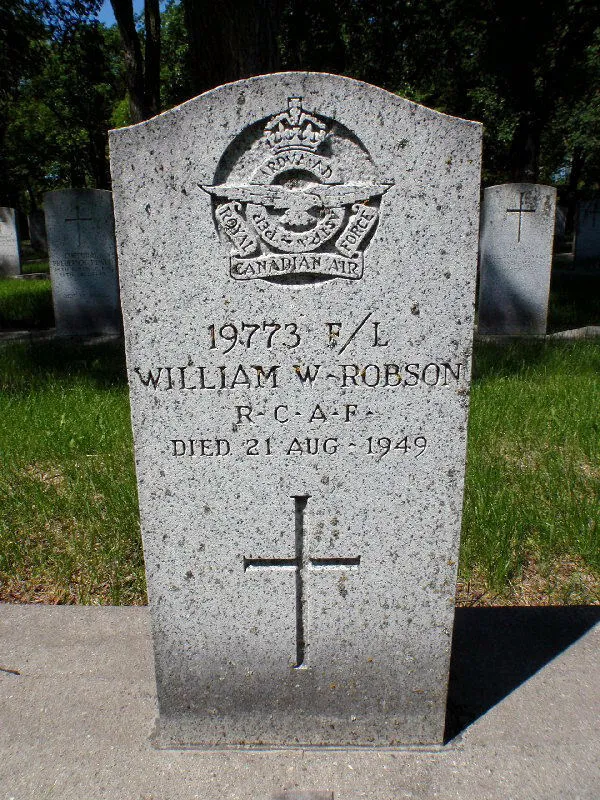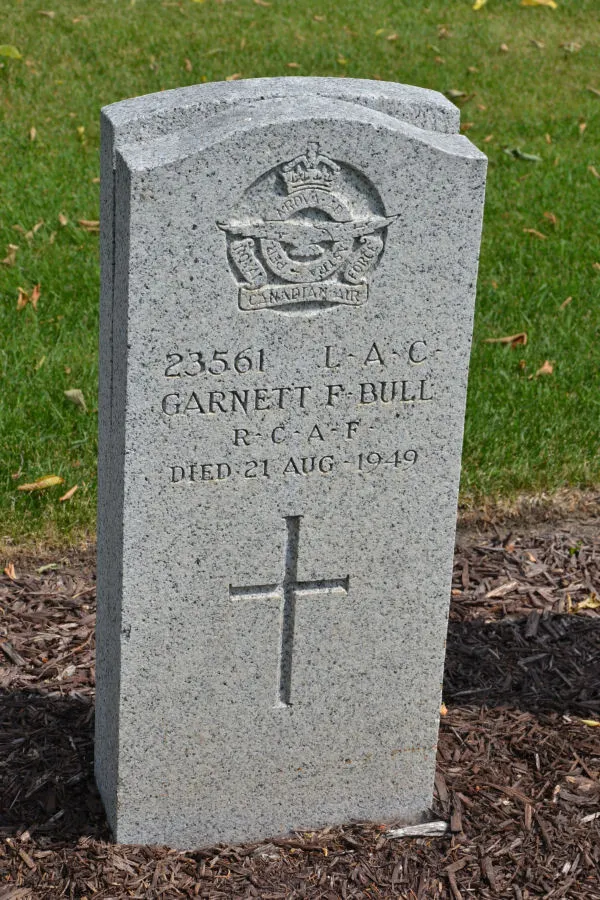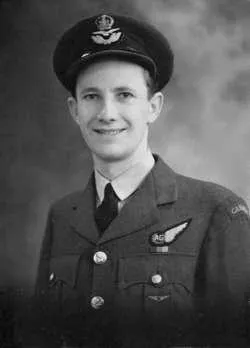Robson, William Wishart
Killed in Flying Accident 1949-08-21
Service
RCAF
Unit
111 (Comm) Flight- Flight
Base
Rank
Flight Lieutenant
Position
Flight Lieutenant
Service Numbers
19773
First Burial
 Brookside Cemetery, Winnipeg, Manitoba, Canada
Brookside Cemetery, Winnipeg, Manitoba, Canada
Canso 11057
Consolidated Canso Catalina PBY PB2B A-10 OA-10 Black Cat

The Consolidated Catalina and Canso were close cousins. The Canso was the true amphibious version of the design and therefore included a conventional undercarriage to allow for either water or land use. The Canso provided more than two decades of valuable service to the RCAF. The Catalina variant came first and was produced beginning in 1935 for the United States Navy. The amphibious version, designated PBY-5A, came in service early in 1941 and the RCAF began using the aircraft on anti-submarine patrols that same year. After the Second World War, the RCAF used Cansos for search and rescue, Arctic survey missions and various transport operations.RCAF



 Canadian Virtual War Memorial
Canadian Virtual War Memorial www.findagrave.com
www.findagrave.com


 Canso PBY
Canso PBY Wikipedia Canso PBY
Wikipedia Canso PBY Harold A Skaarup Web Page
Harold A Skaarup Web Page